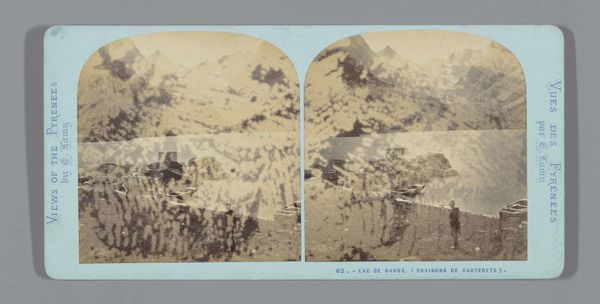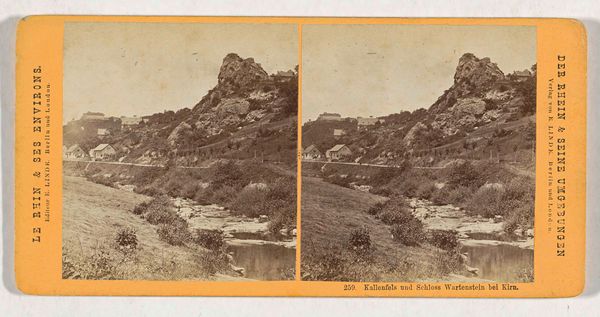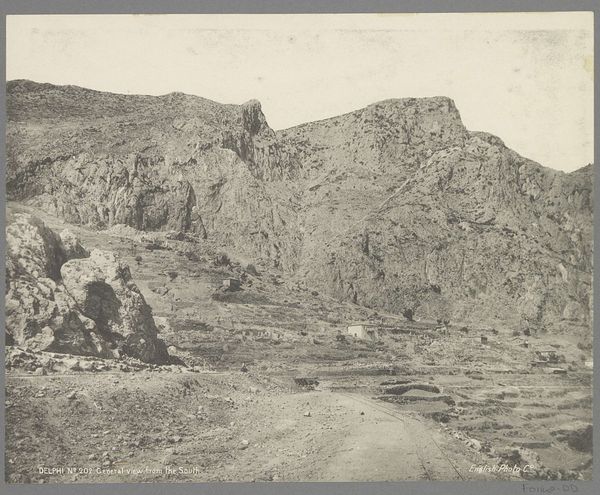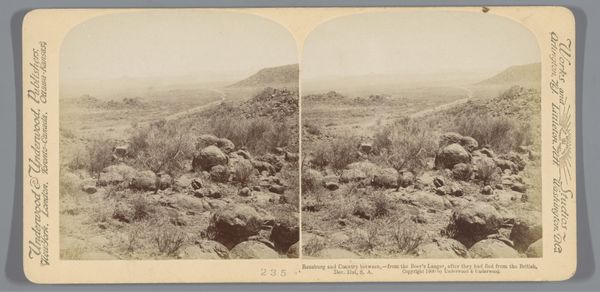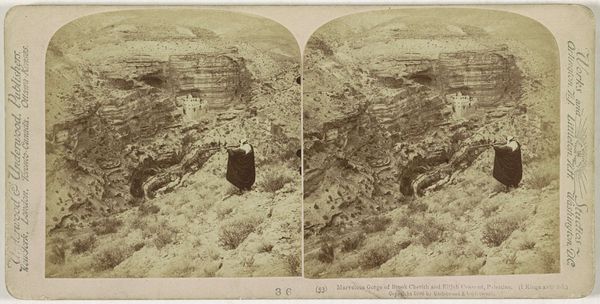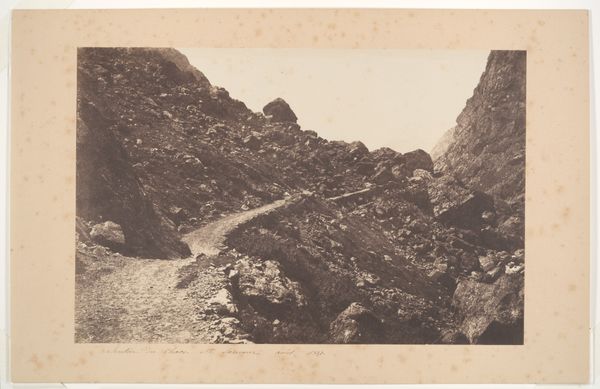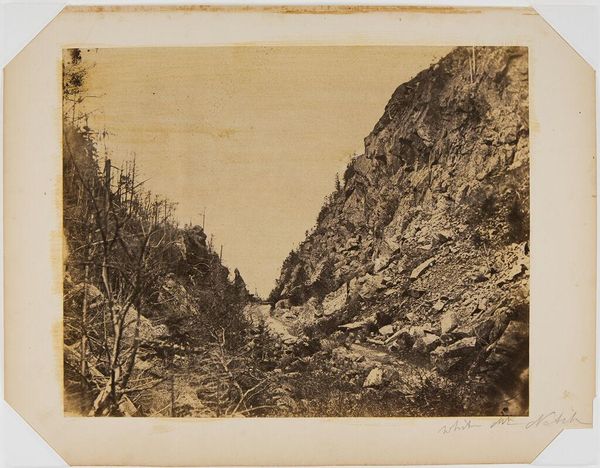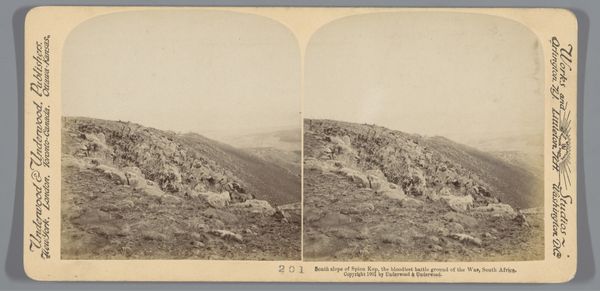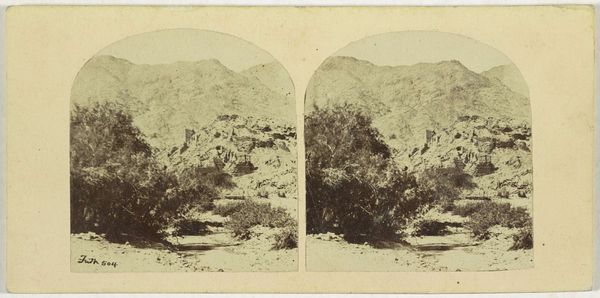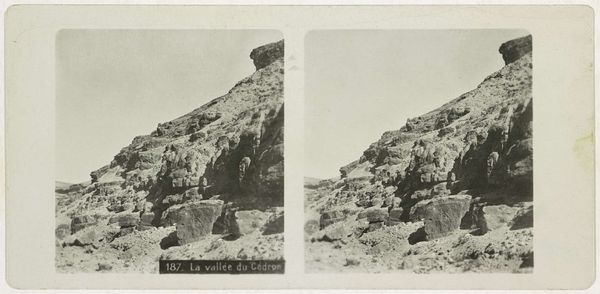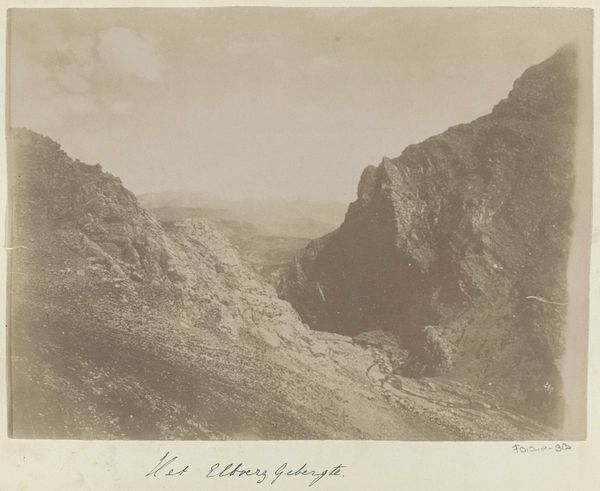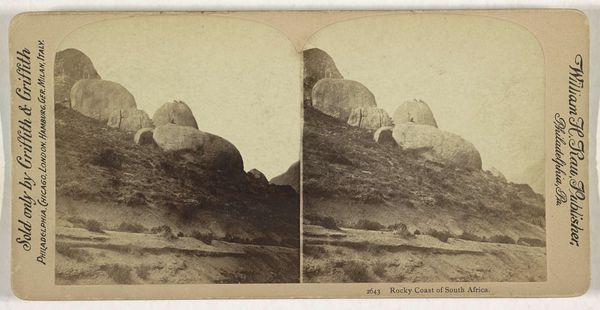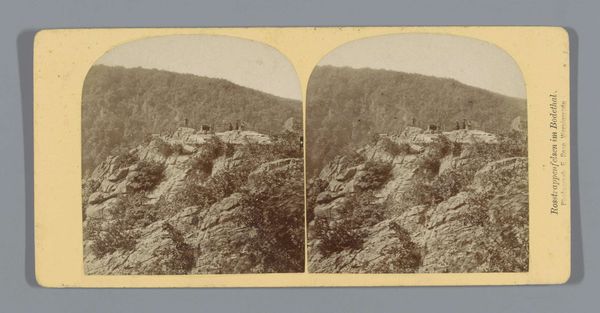
photography, albumen-print
#
water colours
#
landscape
#
photography
#
mountain
#
watercolor
#
albumen-print
#
realism
Dimensions: height 88 mm, width 176 mm
Copyright: Rijks Museum: Open Domain
This stereoscopic photograph was taken by Jean Andrieu sometime in the mid-19th century. Photography, as a process, is deeply tied to both science and industry, combining chemical knowledge with mass production. Here, the tonal qualities of the print, a pale monochrome, give a sense of a scene captured, rather than composed, offering what was considered an objective view. Notice how the stereoscopic presentation – two images side-by-side – creates an illusion of three-dimensionality. This would have offered viewers an immersive experience of the landscape, a virtual pilgrimage. The image's social significance lies in its accessibility. Unlike painting, which required years of training and specialized materials, photography opened up visual representation to a broader segment of society, offering a new form of documentation and a means of mass communication. Photography democratized image-making. This is a view available to almost anyone with a stereoscope. By focusing on photography’s material and social dimensions, we gain a richer understanding of its place in art history, challenging the traditional divide between fine art and everyday practice.
Comments
No comments
Be the first to comment and join the conversation on the ultimate creative platform.
